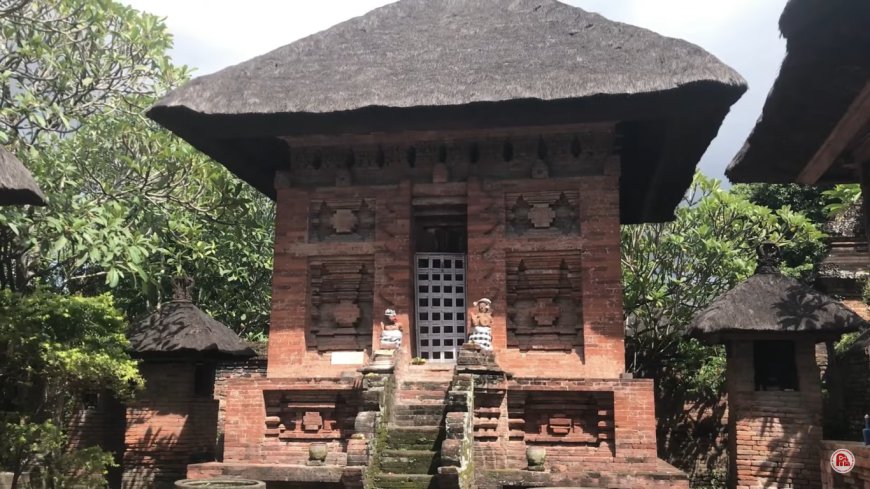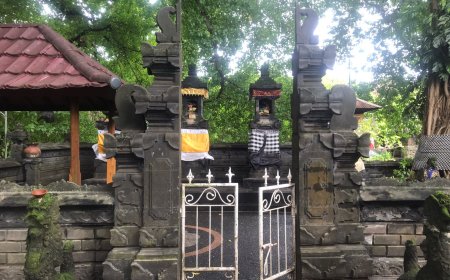Maospahit Temple: Remains of the Majapahit Kingdom in the Middle of the Crowded City Center of Denpasar
Temples, places of worship for Hindus who well known to have traditional values and are spread all over the island of the gods, of the many temples on the bali island, there is one temple that has its own uniqueness and is located in downtown Denpasar, but there are still very few people who know about it . Namely the Maospahit Temple
Maospahit temples is one of the relics of the Majapahit Kingdom . As we know, the Majapahit Kingdom is the largest Hindu kingdom that ever existed in Indonesia and has many historical relics scattered throughout Indonesia, especially in Bali. One of the remains of the Majapahit kingdom in Bali is the Maospahit Temple.
Based on its history written in the Babad Wongayah Dalem, Maospahit Temple was founded in the year Saka 1200 or 1278 AD by Sri Kebo Iwa as part of his dharma or duties as an undagi or building expert in the Badung area where Sri Kebo Iwa at that time founded the Raras Maospahit Temple.

Raras Maospahit Temple (Photo Source : Editorial Collection)
A temple this is in the form of a large red brick pelinggih with most of the walls clean and tidy, there are also two ancient terracotta statues flanking the entrance to the temple. The two statues are made of clay and hold weapons and shields as if they were guardians of the entrance, and there are reliefs of garuda and bima at the gate. the temple is also the main pelinggih in the temple and is located right in the middle of the temple. However, after the Majapahit empire took control of Bali, this temple was again expanded and made magnificent by the governor Gajah Mada to honor the formidable Sri Kebo Iwa, and finally completed in the year Saka 1397 or 1475 AD.
Apart from the Raras Maospahit Temple, there is also another temple that became part of the Maospahit Temple, namely the Gedong Majapahit Temple. Based on the Babad Wongayah Dalem, the temple, which is in the form of a red brick building, was built at the request of the king of the Badung kingdom at that time who wanted to build a Majapahit puppet building to accompany gedong raras maospahit.

Gedong Majapahit Temple (Photo Source : Editorial Collection)
The king of Badung at that time sent envoys to go directly to the Majapahit kingdom in Trowulan, East Java with the aim of getting the size or size of the Gedong temple. This mission experienced two failures. Only on the third mission can you get the measure. Then the envoy returned to Bali, and the Gedong Majapahit Temple was built next to the Raras Maospahit Temple. The two red brick Gedong Temples are the main pelinggih in the Maospahit Temple, where the Raras Maospahit Temple faces west and the Gedong Majapahit Temple faces south.
The uniqueness of the temple lies in terms of temple architecture, because this temple was restored and expanded by the influence of the arrival of Majapahit, making this temple one of the temples in Bali that has East Javanese architecture. We can see the uniqueness of the structure of this temple. This temple adopts the Panca Mandala concept where the temple is divided into five mandalas or parts.

Gedong Majapahit Temple (Photo Source : Editorial Collection)
This Panca Mandala concept adopts the defensive structure of the Majapahit kingdom where the palace or center of the kingdom is in the middle and receives protection from all four directions. cardinal points so that the condition of the palace is completely safe. Making this temple the only temple in Bali that uses the Panca Mandala concept. Usually temples in Bali use the tri mandala concept which consists of jaba, middle jaba, and jeroan or Utama Mandala.
The First part of the panca mandala concept at the Maospahit temple is the Utamaning Mandala or Jeroan which includes the Raras Maospahit temple and the Gedong Majapahit temple. The Second part is the Maryaning Mandala or Central Jaba which only has two buildings, including Bale Semanggen and Bale Tajuk. The Third part is Sisining mandala or Jaba Side consists of two reliefs, namely the statue of Garuda as a manifestation of Vishnu and to the left the statue of Bima as a manifestation of Brahma. Between these two towering reliefs, there is the Corsican Panca, namely the reliefs of Dewa Sangkara, Indra, Yama, Kuwera, and Baruna. The Fourth part is the Twin Jabe Mandala which contains several buildings, including the Kesuma Temple, Piasan and Ratu Ngerurah Pengalasan, Bale Kulkul, Twin Bale. And the Last Part is the Jaba Renggat Mandala. In this part there are no large buildings or shrines but there is only one grand kori called the Rengat temple.
Ida Sesuhunan who is worshiped or worshiped in this temple is a manifestation of the Gods Brahma, Vishnu and Shiva. For the bhatara-bhatari who live in the temple, it is a manifestation of Shiva, Buddha. Lord Shiva gives kadiatmikan or strength and knowledge, while Buddha is a symbol of compassion. While the guard relief in front, his philosophy as a guard. In the Dwarapala area there is Ratu Ngurah Paksi who is a manifestation of God Vishnu, and Ratu Ngurah Bayu who is a manifestation of God Brahma for life in the world. The manifestation of Lord Shiva is worshiped at Raras Maospahit Temple, and is often referred to as Ratu Ayu Mas Maospahit. Meanwhile, the Gedong Majapahit Temple which was constructed was Ida Bhatara Lingsir Sakti as a manifestation of Lord Brahma and Lord Vishnu.
Prayers at this temple are routinely held with a large pujawali which occurs twice a year, namely on the full moon sasih jiyesta to glorify Ratu Ayu Mas Maospahit who resides in the Raras Maospahit temple and the fifth full moon sasih to glorify Ida Betara Lingsir Sakti who resides in the Gedong Majapahit temple. Until now, Maospahit Temple is not only used for prayer, but has also been included in the list of national cultural reserves whose existence must be protected.
Until now, Maospahit temple is not ony used for the prayer. But it has also became national cultural heritages whose existence must be protected. So that not a few tourist come to Maospahit temple just to simply admire the historical works that are still seen when they enter the temple area. So we as citizens must at least keep the Maospahit Temple alive to attract tourist to learn the history of the temple but still maintain and uphold the sanctity and taksu of the Maospahit Temple itself.































































